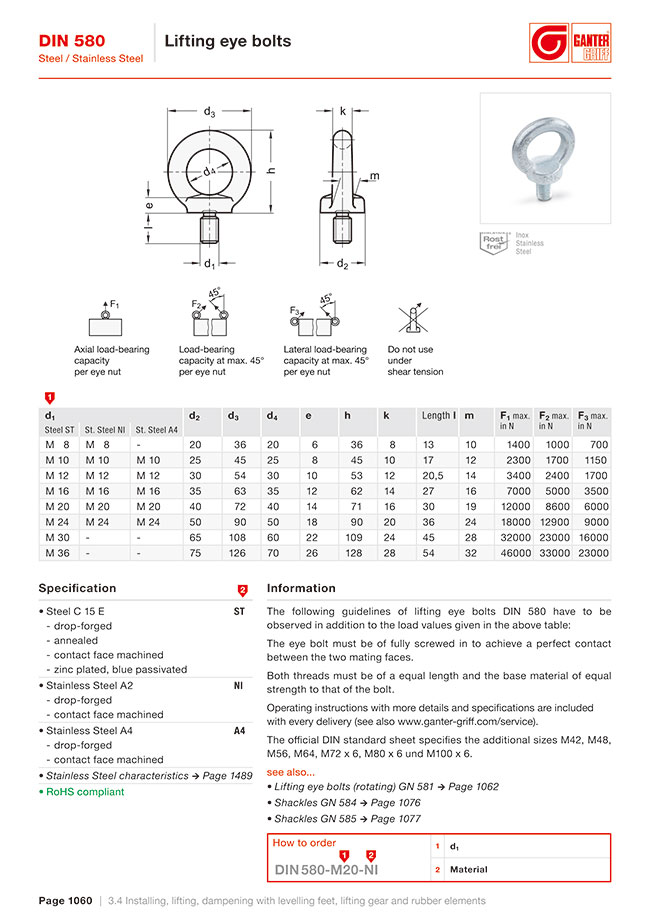

The figure showed the assembly of the locking of a nut by the lock plate. The plate is fixed to the bearing surface by a tap bolt screwed into it. The plate is grooved in such a way that the grooves in the plate receive the hexagonal corners of the nut at every 30° rotation. Initially, the nut is tightened and then the lock plate is inserted through the nut. The empirical proportions of the lock plate are shown in the figure. This type of locking is employed in heavy engineering work, as in the case of connecting rods, wheel shaft etc. The dowel pin screwed in bearing surface prevents the rotation of the collar. When the bolt hole is not close to the vertical edge of the workpiece, this nut is used in conjunction with a separate collar as shown in the figure. This method of locking is possible if the bolt hole is close to the nearest vertical edge as in the case of the marine engine connecting rods. The projecting dog-end of the set-screw enters the groove in the cylindrical portion of the nut and prevents the slackening of the nut. The split pin is then inserted in the hole and the split ends of the pin are opened so as to prevent it from coming out while in use. After the nut has been finally tightened, a small hole is drilled through the blot close to the top face of the nut. The simplest method of locking a nut using a split pin is shown in the figure. In the friction method either an additional nut called lock nut, or a spring washer is used to lock the nut. The positive methods of locking make use of a split pin, or a screw, or a lock plate, or a tab washer to lock the nut. However, the tendency of unscrewing is reduced if the threads of the nut and bolt are of the good fit.

The various locking devices for nuts are classified into positive and friction types. To prevent this, some means of locking the nut from unscrewing is necessary. This consequently may result in a serious breakdown. Under such conditions because of the working clearance existing between the mating threads, the nut develops a tendency to work loose or unscrew by itself. The types of nuts and bolts used in the moving parts of machinery will be subjected to continuous vibration and in addition, sometimes, required to carry varying axial load also, for example, as the crossheads and connecting rods of an engine.

When a nut is tightened over the bolt, a small working clearance exists between the threads of a nut and bolt even in the highest class of fits. This nut can be easily operated by the thumb and a finger and is used where it is required to be adjusted frequently. The hexagonal head is chamfered at its upper end.Ī wing nut is shown in the figure. This is the most common form of a bolt and is used for general fasting purposes. Some of the most commonly used bolts are illustrated below: Hexagonal-headed bolt Types of Nuts and Boltsĭifferent forms and types of nuts and bolts are as follows:

The nut is always used in joining with a mating bolt to fasten various parts together. The nut is a type of a fastener which has a threaded hole in it. The shape of the head is depended upon the purpose for which bolt is required. The shank is threaded at the tail end for a sufficient length so as to effectively engage with a nut. The cylindrical portion of the bolt is known as the shank. In this article, you will learn about the types of nuts and bolts. A bolt contains two parts a shank and head.


 0 kommentar(er)
0 kommentar(er)
